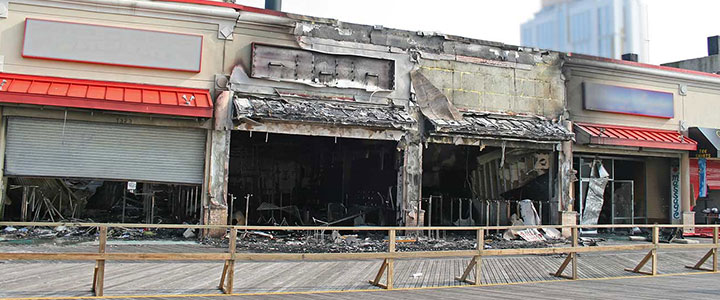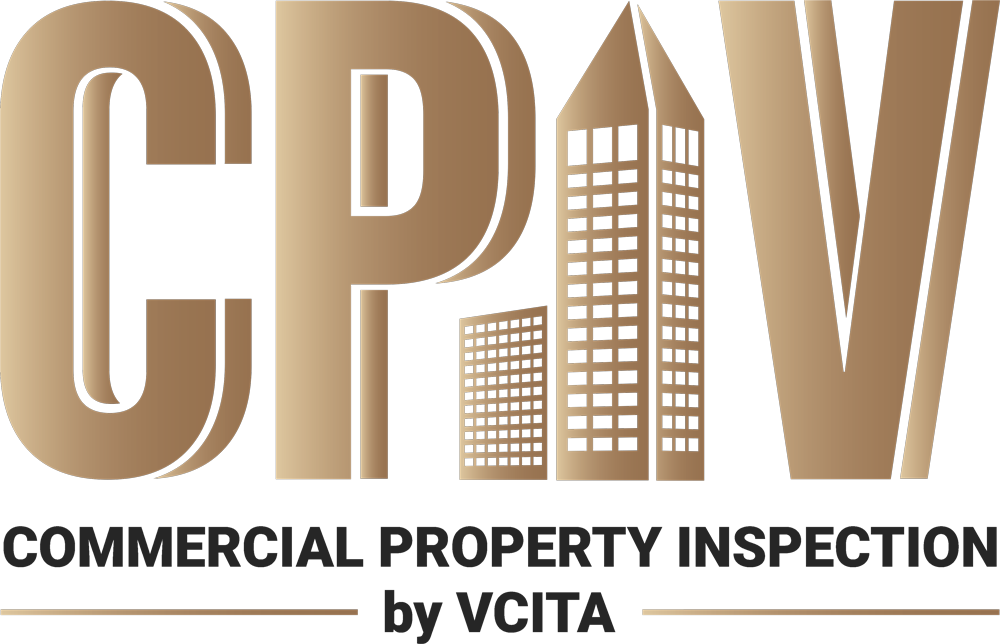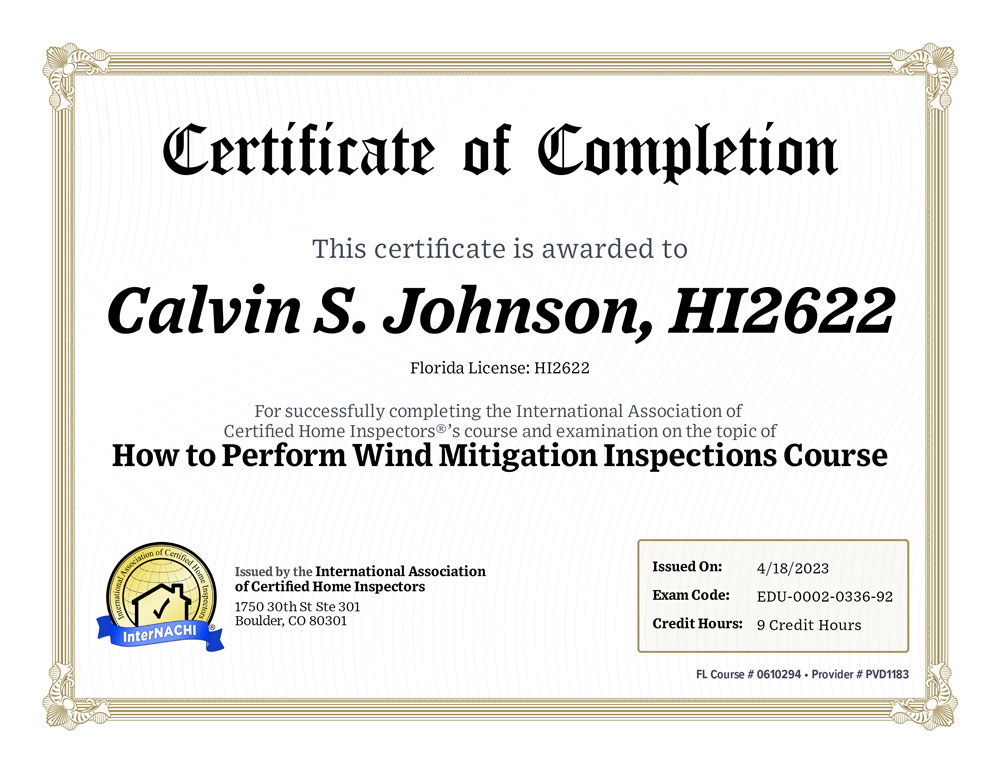Wind Mitigation Inspections
Commercial Property Inspection of Port St Lucie is licensed and certified to provide comprehensive commercial inspection services throughout Florida.
Phone
(844) 332-2264 (Head Office)
(772) 224-5655 (Direct Line)
(954) 295-5216 (Direct Line)

Incentives for Wind Mitigation
Wind mitigation is a strategic approach to minimize wind damage to commercial structures. There are various incentives to encourage property owners to implement these improvements, and qualified inspectors can assess the necessary enhancements. In some states, commercial property owners may qualify for reduced insurance premiums.
States along the Gulf Coast, particularly susceptible to windstorm damage from hurricanes, have contemplated incentives to mitigate wind damage. After Hurricane Andrew, Florida enacted a law requiring insurance companies to offer discounts and credits to customers with existing building features and improvements that reduce wind-related damage and loss. Commercial properties must undergo a certified wind inspection to qualify for these discounts. Unfortunately, many property owners in Florida may not be aware of this law.
In Florida, lenders often mandate windstorm insurance for mortgage approval, and insurers may refuse coverage for properties vulnerable to wind damage. Windstorm insurance holders can avoid substantial deductibles exceeding $20,000 for commercial properties in hurricane-prone areas. Proper wind mitigation measures can help prevent these expenses, ensuring mild to moderate wind damage coverage.

A Few Facts About Windstorms & Wind Insurance
• In 2006, Citizens Insurance, one of the largest property insurers in Florida, requested a 45% rate increase for wind insurance.
• Most insurance companies have taken similar actions.
• In Florida, the portion of a property owner’s premium covering wind damage can be up to 70% of the total, depending on location.
• Wind mitigation benefits property owners, private insurers, and all levels of government.
Checklist for Wind Mitigation Techniques:
Garage Doors: These commonly fail during windstorms due to inadequate door-track strength and mounting systems, flimsy metal panels, no windows, the tracks for the door that have six to nine mounting brackets, or continuous mounting, track brackets that are securely attached to the wall and/or horizontal and/or vertical reinforcement on all panels.
Opening Protection: Glass doors and windows should be replaced with impact-resistant glass. They should be structurally attached to the building in order to prevent the entire window from popping out of its frame. Sliding glass doors are especially vulnerable to flying debris due to their large expanse. Once an opening is created during a windstorm, the pressure within the house can rise high enough to cause the roof to fail in areas of low pressure. The picture to the right demonstrates how these areas of low pressure can form.
Roof Covering: There are many kinds of roof covering materials, and some resist wind damage better than others. The most common roof covering materials in Florida are composition shingles and tiles. A key factor in roof covering performance is the method of attachment of the roof covering material to the roof deck. Nails, not staples, should be used to fasten these materials.
Roof Shape: “Roof shape” refers to the roof’s geometry rather than the type of roof covering. The end-walls of gable roofs extend vertically to the sloping roofline. These gable end-walls, if not properly built or braced, have been known to fail outward due to the negative suctions on the wall. Additionally, field testing has shown that hip roofs receive up to 40% less pressure from wind than gable roofs.
Roof Deck Attachment: According to insurance claim data, a house becomes a major loss once the roof deck fails, even partially. The most common roof deck types are plywood and OSB. The most important feature of the roof deck by far is the attachment to the framing compared to the deck’s thickness. Building techniques can help prevent wind damage include roof coverings using shingles that meet the FBC requirements; roof decks that have been installed with large nails and close spacing; hurricane clips/straps that hold the roof structure to the walls; and protection of windows and glass doors with impact-resistant glazing or other protection systems.
Roof-to-Wall Connections: This connection is a critical safeguard that keeps the roof attached to the building and acts to transfer the uplift loads into the vertical walls. This connection is crucial to the performance of the building due to the large negative pressures acting on the roof. Proper installation is essential to connector performance.
Secondary Water Resistance: This is a layer of protection that shields the home if the roof covering fails. It will reduce leakage if the shingles are blown off. A secondary water barrier is relatively rare in homes. The two most common types are self-adhering modified bitumen underlayment, which is applied to the exterior of all joints, and foam seal, which is sprayed onto the underside of the decking.
Quality Standards & Ethics
AHIT is one of the largest property inspection training institutes in the United States. They are approved and accredited by the American Society of Home Inspectors (ASHI), the International Association of Certified Home Inspectors (InterNACHI), and many other professional organizations. We are ready to put that experience and knowledge to work for you.
As a certified member of InterNACHI, we ensure that you receive the best possible property inspection and professional report. We adhere to comprehensive Standards of Practice and a strict Code of Ethics, which puts our clients first and protects their rights as consumers.
Detailed Property Condition Report
Buying a property can be a stressful experience, so be sure to choose someone with your best interest in mind who can provide you with the information needed to make the best decision. Our findings will be compiled in a final Property Condition Report (PCR). The report contains concise details from the walk-through survey, documents procured, the results of interviews, and any other third-party reports ordered as part of the inspection. The report will provide an inventory of the building’s major systems and components, documented photos, and an evaluation of their functional and physical condition. This will highlight the property’s strengths, potential deficiencies, and deferred maintenance issues. It also includes any recommendations on conducting corrective action or requesting follow-up testing by a specialist. Contact CPIV of Port St. Lucie, FL, to schedule your next commercial property inspection.
Contact Us
Commercial Property Inspection by Vcita of Port St. Lucie, FL, provides commercial property inspection services throughout Florida. Our team is working in most Florida areas (listed below), and we’re constantly expanding!
Daytona Beach, Fort Lauderdale, Fort Pierce, Gainesville, Jacksonville, Melbourne, Miami, Naples, Okeechobee, Orlando, Palm Beaches, Pensacola, Port St. Lucie, Sarasota, Spring Hill, Stuart, Tallahassee, Tampa, Treasure Coast, Vero Beach, & West Palm Beach
Have more questions?
Feel free to call, email, reach out through the chat feature in the bottom right of your screen, or schedule an inspection. We look forward to getting the opportunity to work with you.
Phone
(844) 332-2264 (Head Office)
(772) 224-5655 (Direct Line)
(954) 295-5216 (Direct Line)


